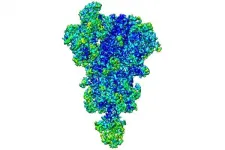Large-scale assessment of reinfection rates in Denmark in 2020 confirms that only a small proportion of people (0.65%) returned a positive PCR test twice. However, while prior infection gave those under the age of 65 years around 80% protection against reinfection, for people aged 65 and older it conferred only 47% protection, indicating that they are more likely to catch COVID-19 again.
The authors of the first large-scale study of its kind detected no evidence that protection against reinfection declined within a six-month follow-up period.
Their findings highlight the importance of measures to protect elderly people during the pandemic, such as enhanced social distancing and prioritisation for vaccines, even for those who have recovered from COVID-19. The analysis also suggests that people who have had the virus should still be vaccinated, as natural protection - particularly among the elderly - cannot be relied upon.
As of January 2021, COVID-19 had resulted in more than 100 million cases and over 2 million deaths worldwide. Recent studies have suggested that reinfections are rare and that immunity can last at least six months, however, the degree to which catching COVID-19 confers protection against repeat infection remains poorly understood.
Dr Steen Ethelberg, from the Statens Serum Institut, Denmark, said: "Our study confirms what a number of others appeared to suggest: reinfection with COVID-19 is rare in younger, healthy people, but the elderly are at greater risk of catching it again. Since older people are also more likely to experience severe disease symptoms, and sadly die, our findings make clear how important it is to implement policies to protect the elderly during the pandemic. Given what is at stake, the results emphasise how important it is that people adhere to measures implemented to keep themselves and others safe, even if they have already had COVID-19. Our insights could also inform policies focused on wider vaccination strategies and the easing of lockdown restrictions." [1]
The authors of the new study analysed data collected as part of Denmark's national COVID-19 testing strategy, through which more than two-thirds of the population (69%, 4 million people) were tested in 2020. Free, national PCR testing - open to anyone, regardless of symptoms - is one of the central pillars of Denmark's strategy to control COVID-19, an approach that sets it apart from most other countries.
Researchers used this data, spanning the country's first and second waves, to estimate protection against repeat infection with the original COVID-19 strain. Ratios of positive and negative test results were calculated taking account of differences in age, sex, and time since infection, and these were used to produce estimates of protection against reinfection.
Importantly, the authors note that the timeframe of their study meant it was not possible to estimate protection against reinfection with COVID-19 variants, some of which are known to be more transmissible. Further studies are needed to assess how protection against repeat infection might vary with different COVID-19 strains.
Among people who had COVID-19 during the first wave between March and May 2020, only 0.65% (72/11,068) tested positive again during the second wave from September to December 2020. At 3.3% (16,819/514,271), the rate of infection was five times higher among people who returned a positive test during the second wave having previously tested negative.
Of those under the age of 65 who had COVID-19 during the first wave, 0.60% (55/9,137) tested positive again during the second wave. The rate of infection during the second wave among people in this age group who had previously tested negative was 3.60% (14,953/420,909). Older people were found to be at greater risk of reinfection, with 0.88% (17/1,931) of those aged 65 or older who were infected during the first wave testing positive again in the second wave. Among people 65 or older who had previously not had COVID-19, 2.0% (1,866/93,362) tested positive during the second wave.
Similar results were obtained in an alternative cohort analysis, in which test data from almost 2.5 million people were assessed to determine reinfection rates throughout the epidemic, not just during the second wave. Only 0.48% (138/28,875) of people who had previously tested positive for COVID-19 caught it again at least three months later, compared with 2.2% (53,991/2,405,683) for those who initially tested negative. Estimated protection against reinfection was 78.8%. Protection against repeat infections varied little among people under the age of 65 years, with authors estimating 80.5% protection for this group. However, protection against reinfection was much lower among people over the age of 65 years, with estimated protection of just 47%.
Due to their high risk of exposure to the virus, a sub-analysis of healthcare workers was also carried out. Again, results were similar to those of the main analysis, with 1.2% (8/658) of those who had COVID-19 during the first wave becoming re-infected, compared with 6.2% (934/14,946) of those who were negative during the first wave. Estimated protection against reinfection was 81.1%.
Further analysis exploring two and four months' separation between pandemic waves - increasing the time between patients' first and second tests to limit the chances of misclassifying reinfections - also produced similar results (76.7% and 82.8% protection from reinfection, respectively).
In line with findings from other studies, the authors identified no evidence that protection against repeat infection with COVID-19 waned within six months. Because COVID-19 was only identified in December 2019, the period of protective immunity conferred by infection has still to be determined.
Dr Daniela Michlmayr, from the Staten Serum Institut, Denmark, said: "In our study, we did not identify anything to indicate that protection against reinfection declines within six months of having COVID-19. The closely related coronaviruses SARS and MERS have both been shown to confer immune protection against reinfection lasting up to three years, but ongoing analysis of COVID-19 is needed to understand its long-term effects on patients' chances of becoming infected again." [1]
The authors acknowledge some limitations to their study. Detailed clinical information is recorded only if patients are admitted to hospital, so it was not possible to assess whether the severity of COVID-19 symptoms affects patients' protection against reinfection. Misclassification of reinfections may have happened if viral RNA lingered for more than three months in some patients, although the authors sought to account for this by assessing two- and four-month gaps between COVID-19 waves. Errors in testing may also have occurred, however, the PCR tests used are believed to be highly accurate, and the authors would expect only around two false positives for every 10,000 tests in uninfected people and around three false negatives for every 100 tests in people with the infection.
Writing in a linked comment, Professors Rosemary J Boyton and Daniel M Altmann, from Imperial College London, UK, said: "Set against the more formal reinfection case reports that are based on differential virus sequence data and make reinfection appear an extremely rare event, many will find the data reported by Hansen colleagues about protection through natural infection relatively alarming. Only 80% protection from reinfection in general, decreasing to 47% in people aged 65 years and older are more concerning figures than offered by previous studies.
They continue, "These data are all confirmation, if it were needed, that for SARS-CoV-2 the hope of protective immunity through natural infections might not be within our reach and a global vaccination programme with high efficacy vaccines is the enduring solution."
INFORMATION:
Peer-reviewed / Observational study / People
NOTES TO EDITORS
This study received no designated funding. It was conducted by researchers from the Staten Serum Institut and University of Copenhagen, Denmark, and the European Centre for Disease Prevention and Control, Sweden.
[1] Quote direct from author and cannot be found in the text of the Article.
The labels have been added to this press release as part of a project run by the Academy of Medical Sciences seeking to improve the communication of evidence. For more information, please see: http://www.sciencemediacentre.org/wp-content/uploads/2018/01/AMS-press-release-labelling-system-GUIDANCE.pdf if you have any questions or feedback, please contact The Lancet press office pressoffice@lancet.com






